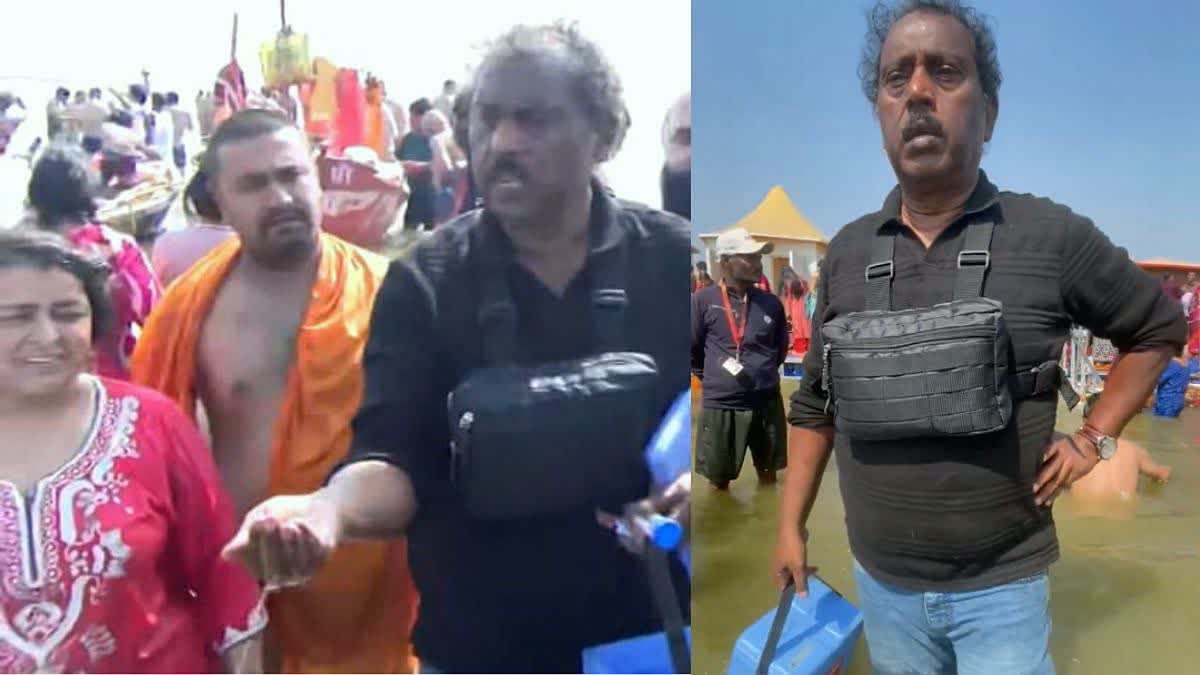Prayagraj: Amid a row over the purity of Gangajal (water from the River Ganga), Padma Shri awardee scientist Dr Ajay Sonkar has defended the holy water by conducting experiments and claiming it is uninhabitable for faecal coliform bacteria.
Safety concerns were raised by the Central Pollution Control Board (CPCB) in a report questioning the purity of Gangajal, triggering concerns among visitors. However, several environmental scientists from Jawaharlal Nehru University (JNU), Allahabad University (AU), and Bihar University have clarified the report, stating that the water is safe for bathing.
Dr Sonkar has already rejected the CPCB report in his research, claiming that faecal coliform bacteria cannot grow in the Gangajal at the Sangam. To support his claim, he conducted a daring experiment by drinking the holy water to prove its safety for consumption.
“During the Maha Kumbh Mela, the temperature of Gangajal remained between 10 and 15 degrees Celsius, whereas coliform bacteria grow when the temperature is above 20 degrees,” he said.
Dr Sonkar drank Gangajal in front of lakhs of devotees, attempting to prove that no harmful bacteria existed in the water. “The characteristics of Gangajal and the current temperature make it unsuitable for bacterial growth. Fecal coliform bacteria remain completely inactive when the water temperature is below 20 degrees Celsius,” he explained.
About the CPCB Report
In the report sent by the CPCB to the National Green Tribunal (NGT), it was stated that the level of faecal coliform bacteria in Gangajal exceeded 2500 units per 100 ml of water. Following this, the NGT reprimanded the Uttar Pradesh Pollution Control Board.
The central board has set water quality standards for bathing in rivers, specifying the permissible limits for faecal coliform, faecal streptococci, pH levels, dissolved oxygen, and other factors. The maximum acceptable limit for faecal coliform is 2500 units per 100 ml, and for faecal streptococci, it is 2 MPN per 100 ml. The recommended pH range is between 6.5 and 8.5, with a minimum dissolved oxygen level of 5 mg/l. The maximum acceptable limit for biochemical oxygen demand is 500 mg/l.
Standards for Correct Water Quality
Electrical conductance (EC) should be less than 750 μS/cm.
Chloride concentration should be less than 250 mg/l.
